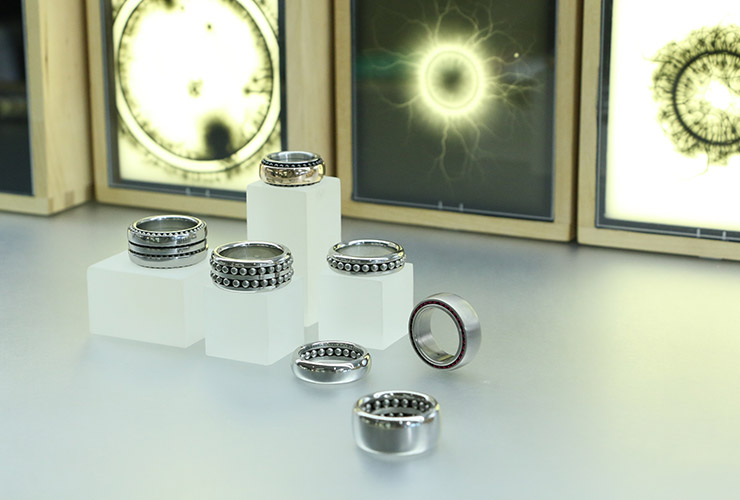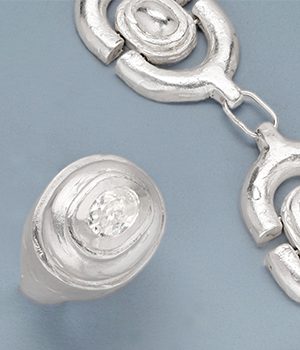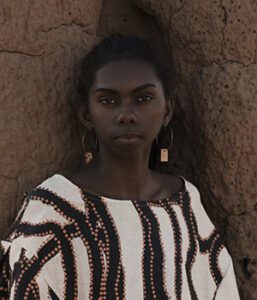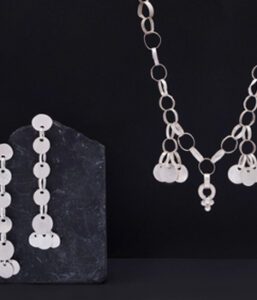Force and Motion by Sean O’Connell
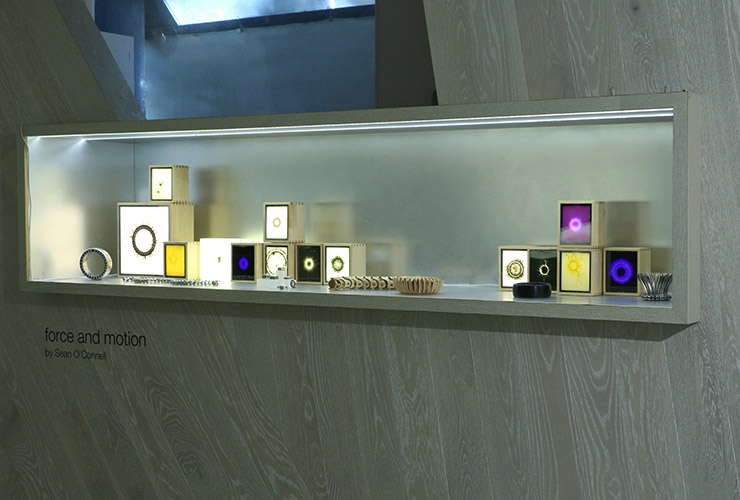
Exhibition dates: 17-29 October, 2017
Sean O’Connell makes jewellery that moves. His wearable amulets reduce the daily frictions of life and provide something to fiddle with as one is deep in thought. In this exhibition, Sean presents a range of works paired with an exploration of the energetic potential of jewellery, through several spark discharge images of rings and chains he has made. These spark images, made directly over silver emulsion, look deep into the structure of matter and the geometry of form.
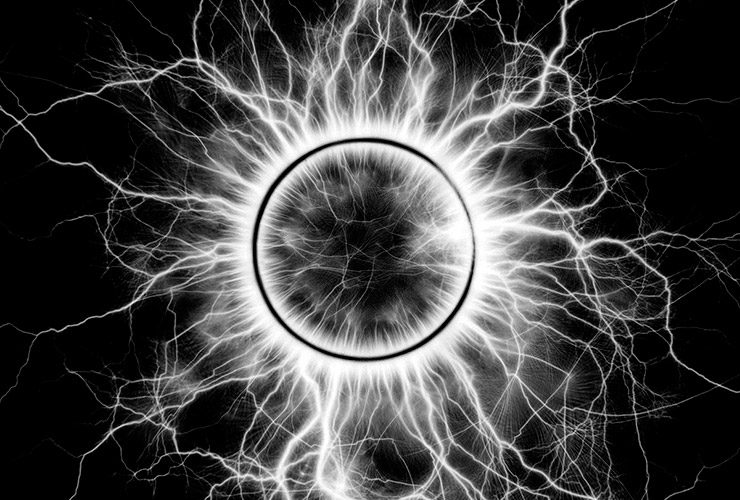
O’Connell’s jewellery practice is process-driven, and the making of each piece occupies his full attention and care. Whether crafting with hammer and file, or turning on the lathe, the pieces are created with an intimate contact that feeds back as knowledge of material and process, leading to evolving designs and methodologies. The act of making is a thinking through ideas all of its own – a way of making sense.
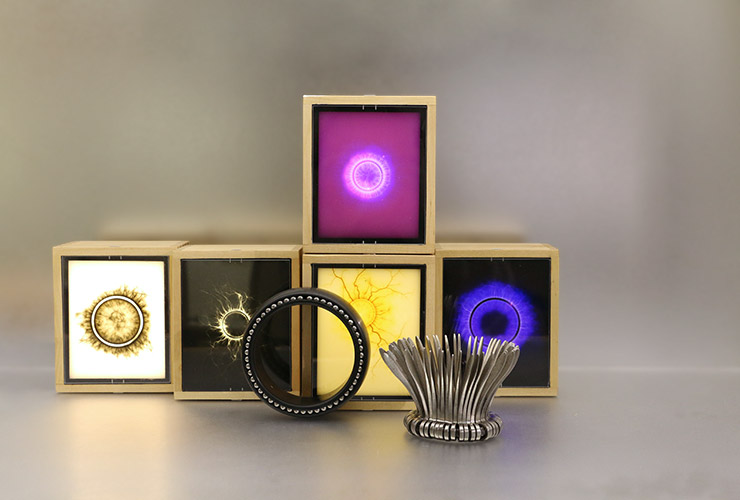
The spark discharge images shown reveal the flow of electricity through material and form. Rings and chains in various materials sit on top of photographic emulsion and are bombarded with electricity from above. Using a range of small machines handbuilt only for this process, the electricity can be powerfully blasted through metal, gently washed through it, or allowed to resonate back and forth at any frequency. Each material and form has a complex electrical character, and these images reveal their individual energetic signature.
What you see in the images are electrical arcs, ionised trails of light, channelled through each ring, directly exposing onto traditional photographic emulsion. The images are not presented here as an aura or the motion of the aether, but simply as excess electrical energy trying to find a way to ground as fast as possible – like a ball rolling down a hill – potential energy naturally seeking out the lowest place.
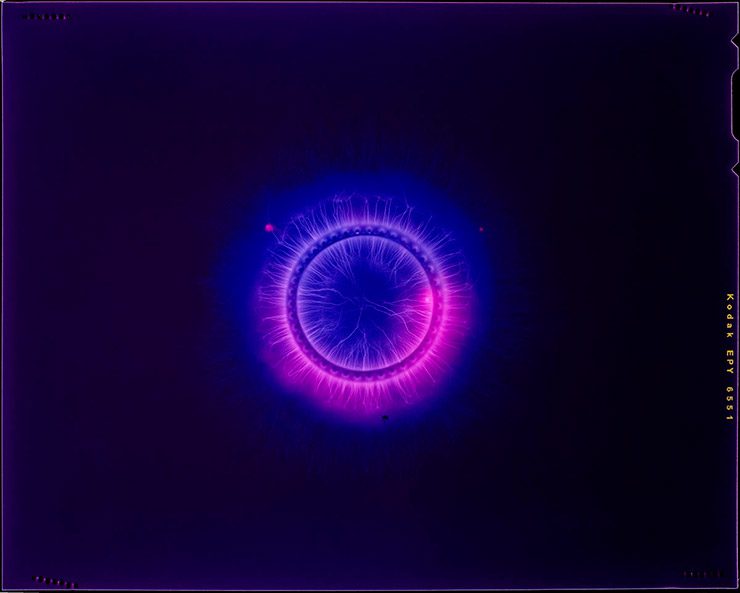
But this does not mean these images are simple or meaningless at all. Such spark discharge imaging techniques were used to examine metal castings, checking for flaws, searching for cracks or porosity not visible to the eye, but shown clearly by the flow of electricity through the material and form. A very similar technique is also called kirlian photography, and has all sorts of new age connotations, though was originally developed to assist medical diagnoses in Russia during the middle of the last century. Here, with this jewellery, it is being used in two ways: firstly, to explore the nature of different materials and forms as they conduct, store and resonate electrical energy, requiring subtle examinations of each image and carefully documented experiments; secondly, and much more importantly, these pictures are a poetic trigger to imagine the material world as embedded within a flux of energy – perhaps
even to imagine the world as fundamentally energetic.
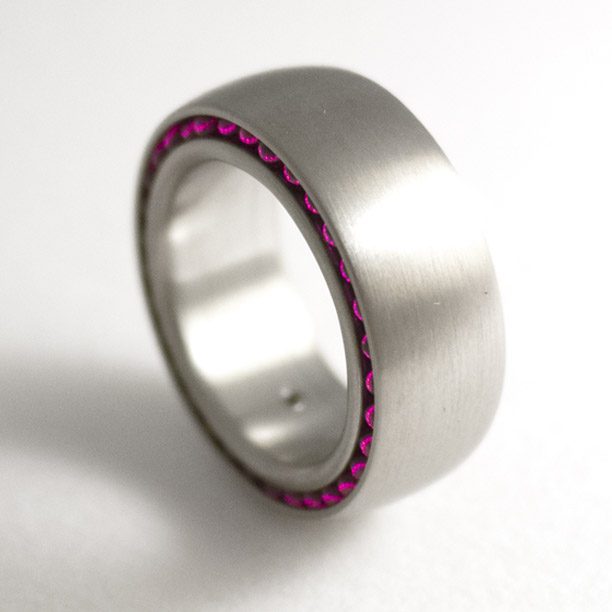
These philosophical ponderings fuel the thinking that goes into O’Connell’s doctoral thesis into the nature of perception, entitled “Shapes of Edges”. O’Connell’s kinetic jewellery work is, by comparison, simple. Polished metals, rolling balls, flexible joints and hidden springs add movement and a sense of wonder to clean minimal forms worn on the hand, wrist, or neck. The movements often dictate the aesthetic, designing themselves, or, protecting the movements, conceal the true jewels of the work for the personal joy of the wearer.
O’Connell has said that these wearables store an excess of movement which can be drawn upon by the wearer in times of friction and stress, something that is no doubt beneficial to us all in these demanding days of do-or-die workplace delivery. Whether they encourage a strong sense of flexibility, like with the uni-joint chains constructed of dense rigid units acting together with stable integrity to create a fluid motion, or whether it is the simple free spinning movement of hidden ruby balls protected by a gold shell – this jewellery all performs energetic adjustments upon the flow of normal life.
